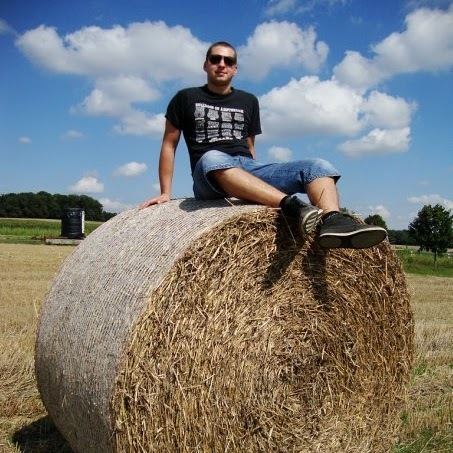Name Oleg Tronko | ||
 | ||
Oleg Tronko (20 June 1918, Kiev, Russian Empire - 27 February 1939, Rome, Italy) was a Catholic convert from Orthodoxy and a seminarist from Russicum.
Biography
Oleg Tronko was born in Kiev, in September of the same year he was baptized as Orthodox. Oleg's father fought an officer of the Volunteer Army. In December 1919 the family was forced to leave Kiev, which precipitated the Bolsheviks. The family settled in Armavir. Because of the approaching Red Army his family had to move again, this time to Crimea, where the family was evacuated through Constantinople in Gallipoli, where she lived for 13 months.
In December 1921 the family moved to Bulgaria and in March 1922 settled themselves in Turnovo. His father Vladimir Tronko got regent in the Orthodox Cathedral, the son studied at the Russian school. During the holidays, he was forced to work instead of rest, helping blinded mother. Oleg is quite often sick, 10 years old, he fell ill with pneumonia, which was complicated by purulent pleurisy. The doctor declared that there was no hope of recovery there. But the mother did not cease to pray Oleg at Saint Therese the Little for the recovery of his son and a few days Oleg recovered his health.
In 1934 Oleg went to Sofia school. During this period, he began a serious spiritual crisis. Mother urged him to go to church more often, however, he resolutely refused, citing the fact he does not understand "breech" of religion, and does not accept the misbehavior of the clergy. But believe Oleg did not stop, he regularly prayed before the icons in my room. During this period, Oleg began to lead a promiscuous life: often drank, smoked, was fond of music, then, that policy. Soon Oleg began to lose his sight and almost completely blind. His mother, all the while fervently praying, crying out to the Lord and Saint Theresa. From the monastery in Lisieux she was an icon and a piece of matter, which was applied to recover the son's health due to cancer. Amulet with this matter, she hung his son on his chest and put a pillow under the icon of Saint Teresa. Soon Oleg fully sight. Oleg's mother sent her sister to study in Sofia board of Saint Joseph, who led the Catholic nuns. Sons strongly protested after learning that their mother is a Catholic. Particularly resented Oleg, he reproached her mother for being sent her daughter to a Catholic school. As a result of familiarity with the Greek-Catholic Bishop Cyril Kurtev, Tronko decided to join the Catholic Church. This decision on the Tronko's approval also was influenced by his attachment to the Catholic Saint Therese of Lisieux. His accession to Catholic Church took place on February 12, 1938 in the chapel of Bishop Cyril. The next day, to the surprise of friends and relatives who knew him as a fierce opponent of Catholicism, he took communion in the Church of the Carmelite Monastery. After joining the Catholic Church Oleg every day before going to school, attended the morning service at the Carmelite monastery, where was serving at the time of the liturgy. He gave up smoking and drinking alcohol, quit employment policy. Oleg begged Bishop Cyril help him do a novice in the Carmelite convent, but the bishop advised him to finish Russicum, to become a priest, and only then think about the monastic life. In October 1938, Oleg came to Rome. But immediate problems arose, many subjects were taught in Latin, which he did not know. With a little knowledge of Italian, he nevertheless tried to learn Latin courses study of classical languages. In January 1939 he was able to get a Latin teacher who knew the Russian language. The morning of February 28, Oleg did not attend the liturgy and breakfast. At nine o'clock in the morning one of the brothers looked up to his room. The room was in order. Oleg was lying in bed on my left side with a rosary in his hands with no signs of life. An autopsy revealed that Oleg was suffering from an incurable childhood disease. The funeral took place on the morning of March 3 by the Byzantine rite.
